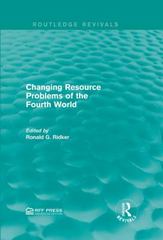Answered step by step
Verified Expert Solution
Question
1 Approved Answer
Assignment 3 -...t Equilibrium.pdf Labor Economics Labor Market Equilibrium Consider the model of labor market equilibrium discussed in class. As- sume that jobs have

Assignment 3 -...t Equilibrium.pdf Labor Economics Labor Market Equilibrium Consider the model of labor market equilibrium discussed in class. As- sume that jobs have all the same 8 hours/day shift, so labor supply choices happen only at the extensive margin. That is, workers only need to decide whether to work or not. Also assume that the product produced in this la- bor market is priced at the international markets - which makes the demand for the final good infinitely elastic. Thus, changes in the labor market will not affect the price of the good being produced. The number of workers willing to supply labor evolves according to the following labor supply function: Where L, is the measure of workers willing to supply labor, wis the wage rate, and , is the labor supply elasticity. In the other side of the market, firms face the following production tech- nology: y = AL, where A measures the productivity, La is the number of workers the firm is employing, and y is the total number of units of output that is produced. Firms maximize profits, which are the difference between revenues and costs: Profit Revenues - Costs = II = Pyy - wLd where II is the profit, w is the wage rate, and p, is the price of the product produced in this labor market. by: This technology of production implies that marginal revenues are given opy A Marginal Revenue = L 1-a Firms hiring decisions are characterized by the following rule: Continue to increase hiring up to the point that the increase (marginal) in revenue brought by a worker is just high enough to cover his/her costs. In the absence e) How much of the tax burden is borne by the workers? What is the mechanism through which part of the costs are shifted from the firms to workers? h) Draw the graph of the log excess of demand equation (log Ld-log Ls) before and after the tax is introduced. Make sure you label the axis, the magnitude of the slope, you identify the height of the intercept, and the exact point that it reaches zero in both cases. Question 4 Mandated Benefits The government decides to force firms to provide all of their employees with health insurance. The current equilibrium wage rate that prevails in the market is 80 dollars a day. The cost of health insurance is 20 dollars per worker per day. The worker's valuation, or willigness to pay for the health insurance is 15 dollars per day.1 a) Find the change in labor supply associated with this policy. b) Find the change in labor demand associated with this policy. c) Find the change in the equilibrium wage associated with this policy. d) Find the change in the cost per worker associated with this policy. e) Find the change in the worker's total compensation (wage and fringe benefits) associated with this policy. f) Now, assume that , = 0. Who bears the costs of providing the health insurance? g) Now, instead, assume that = 0. Who bears the cost of providing health insurance? Question Review Questions a) What is the condition that characterizes the labor market equilibrium? b) If wages are taxed at a rate of 7 equal to 10%, how does it change the equation that characterizes the firm's employment decision? c) The number of workers that are willing to supply labor increases by 5% if the worker's wage increases by 15%. What is the value of ,, the labor supply elasticity, that is consistent with this relationship? d) In a labor market the total number of workers that firms are willing to hire at the current wage rate of 10 dollars per hour is 5000. A recent improvement in the technology of production increased every worker's pro- ductity, A, by 10%. Provided that the wage rate remains the same, the 'Hint: Note that forcing the firm to provide health insurance for every employee is similar to imposing a tax of 20/80 on every worker that the firm hires at the current wage, so a tax of 25%. Similarly, providing the worker with health insurance that is valued at 15 dollars is the same as increasing his wage by 15/80, or 18.75%. 1 3
Step by Step Solution
There are 3 Steps involved in it
Step: 1

Get Instant Access to Expert-Tailored Solutions
See step-by-step solutions with expert insights and AI powered tools for academic success
Step: 2

Step: 3

Ace Your Homework with AI
Get the answers you need in no time with our AI-driven, step-by-step assistance
Get Started


